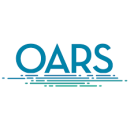States
MassachusettsThis project will remove the Talbot Mills Dam on the Concord River in the Sudbury, Assabet and Concord watershed near Billerica, Massachusetts. The dam removal will benefit blueback herring, river herring, American shad, American eel, sea lamprey, spotted turtle, and wood turtle. The Talbot Mills Dam has been cutting off native fish migrations since the 1700’s. Major restoration work has been on-going for more than 20 years by federal, state, non-profit and municipal stakeholders to improve the water and habitat quality of the Concord River after more than 200 years of disruption. This is the largest dam removal ever in Massachusetts, opening 135 miles and 740 acres of habitat, including 260 acres of lakes and ponds, spawning, rearing and thermal refugia habitat for native fish species. This dam removal will reduce flooding, improve water quality, and improve recreational boating.
Project Quick Facts:
| Project Status | In Development |
| Location | MA, Middlesex County |
| NFPP Project Funding | $1,043,951 |
| Restoration Techniques | Dam Removal |
| Accomplishments | 135 stream miles reopened, 260 acres reopened |
| Partner Project Lead | OARS |
The National Fish Passage Program: Leaders in Building Bridges and Fostering Connections
The National Fish Passage Program is a national leader connecting watersheds and people. The program has decades of experience implementing infrastructure projects with partners. Fish passage project proposals can be initiated by any individual, organization, government, or agency. However, proposals must be submitted and completed in cooperation with a Fish and Wildlife Conservation Office. (Please note that fish passage fish passage
Fish passage is the ability of fish or other aquatic species to move freely throughout their life to find food, reproduce, and complete their natural migration cycles. Millions of barriers to fish passage across the country are fragmenting habitat and leading to species declines. The U.S. Fish and Wildlife Service's National Fish Passage Program is working to reconnect watersheds to benefit both wildlife and people.
Learn more about fish passage projects being used for federal or state compensatory mitigation or required by existing federal or state regulatory programs are not eligible for funding through the National Fish Passage Program.)
CONTACT A FISH PASSAGE COORDINATOR IN YOUR AREA TO GET STARTED.
200 Million Dollar Investment in Rivers, Wildlife, and Communities
Clean free-flowing waterways are vital to wildlife, people, and ecosystems. But across the country, millions of barriers fragment rivers, block fish migration, and put communities at higher risk to flooding. The Bipartisan Infrastructure Law Bipartisan Infrastructure Law
The Bipartisan Infrastructure Law (BIL) is a once-in-a-generation investment in the nation’s infrastructure and economic competitiveness. We were directly appropriated $455 million over five years in BIL funds for programs related to the President’s America the Beautiful initiative.
Learn more about Bipartisan Infrastructure Law , signed in November 2021, included $200 million for restoring fish and wildlife passage by removing in-stream barriers and providing technical assistance under the National Fish Passage Program.



